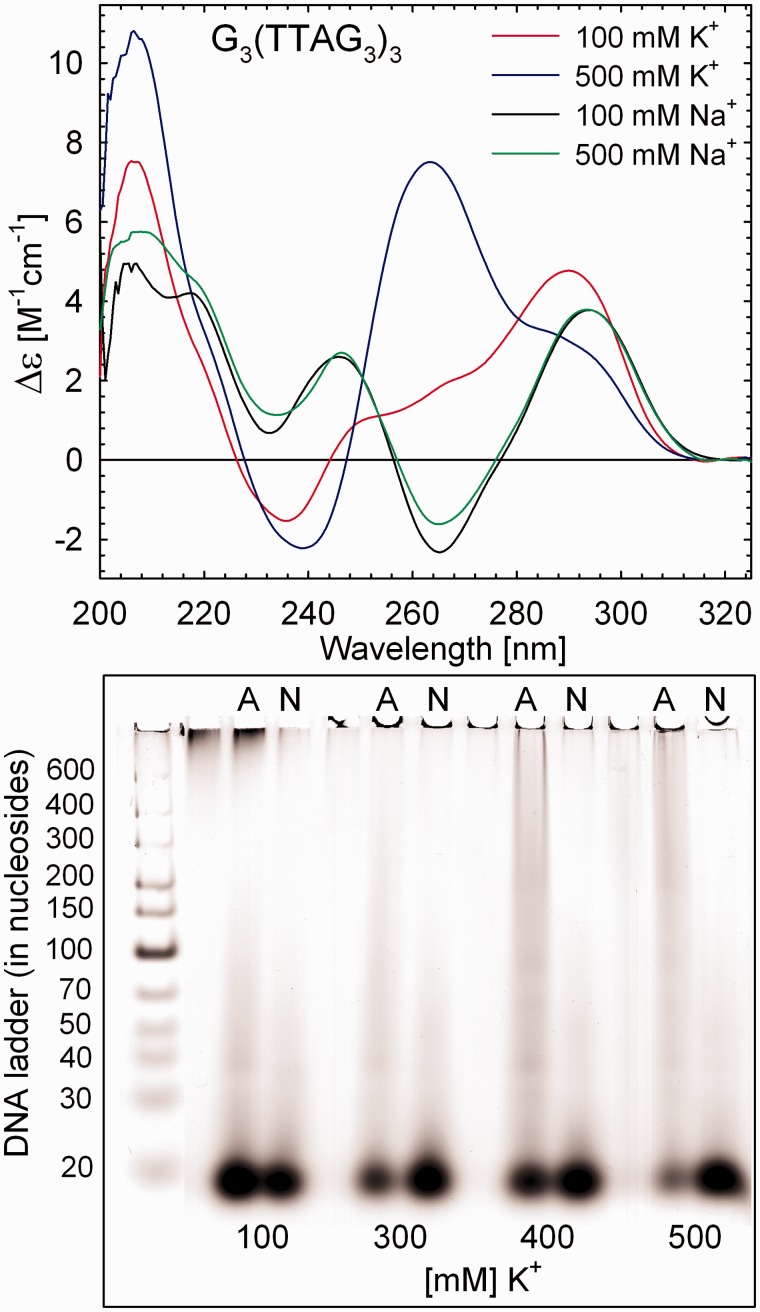Figure 6.
Top: CD spectra of 50 mM G3(TTAG3)3 in the presence of 100 and 500 mM of Na+ or K+. Positive bands at ∼245 and ∼293 nm and negative band at ∼265 nm affirm antiparallel foldback of the Na+-stabilized G3(TTAG3)3, regardless of the Na+ concentration. Even though without negative band at ∼265 nm, the CD spectrum of 100 mM K+-stabilized G3(TTAG3)3 was recently proven to be indicative for essentially the same antiparallel topology as adopted by Na+-stabilized quadruplex (30), contradicting the previous interpretation attributing CD spectra of this shape to hybrid (3 + 1) form (18,19,22). Transition to the parallel structure via hybrid (3 + 1) forms is accompanied by appearance of a strong positive band at ∼263 nm, decrease of the positive band at ∼290 nm and the presence of negative band at ∼240 nm (30), the CD features visible in the presence of 500 mM K+. Bottom: native PAGE of 50 mM G3(TTAG3)3 in 100–500 mM of K+ before heating (N) and after slow annealing (A). The PAGE was performed at 20°C in 30 mM PBS containing 300 mM K+ in total, pH 6.7.

